Once upon a time there was a sad, unloved, alleyway. It was overgrown with weeds and brambles. And strewn with cans and broken bottles. Shopping trolleys, mattresses and building rubble were dumped at one end. Graffiti daubed on its walls. Many local people avoided the dingy pathway. And those that did use it as a short cut, hurried through with their heads down. It didn’t even have a name.
Then one day two neighbours decided to change all that. They pulled up all the weeds and planted flowers. Colourful climbers, cheery sunflowers and hollyhocks, sweet smelling lavender, wallflowers and snapdragons. Butterflies and bees arrived first. Then the children. One five year old girl, Etholle, named it Flower Lane, and the two women who tended it ‘The Flower Ladies.’ Local people started to gather there and chat. They raised money for a bench where they could sit and enjoy each other’s company, and for a local artist to paint over the scribblings and create a magnificent mural. And now the alleyway wasn’t sad anymore. For the community began to care for the place properly. And this made Flower Lane very happy.
It may sound like a children’s story. But this is the true tale of what happened only last year when residents in East Oxford set out to transform a neglected area near where they lived. I discovered the place quite by chance while cycling down Howard Street, a lengthy thoroughfare of late 19th century terraced housing a couple of miles east of the city’s ‘dreaming spires’. Howard Street runs from the Iffley to the Cowley Road just before you arrive at the Donnington Bridge turn on your way out of Oxford. There’s a Coop on the corner and halfway down the wonderful eccentricity that is the Donnington Arms, an old style drinking establishment on one side and the Everest Nepalese Restaurant run by Gurkhas on the other. It’s home to what has been dubbed ‘Britain’s most hated bollard’, one of the LTNs (Low Traffic Neighbourhoods) traffic measures that provoke angry reactions from car drivers but is bliss for walkers and cyclists.
Flower Lane is a hundred yards or so on the right if you are coming from the Iffley end. A narrow alleyway that links Howard Street to the Boundary Brook estate to the south. Once a large area of allotments (of which a few remain next to a small nature reserve) these flats and houses were built in the 1970’s to relieve severe social housing shortages. There’s a primary school at one end, Larkrise, the name evoking the time when the place was still open countryside and filled with the sound of birdsong.
This is Dawn Weller’s stamping ground, one of the Flower Ladies herself. I meet her in Flower Lane, hard at work deadheading and watering after she had finished her day job. “What has happened here has changed the perception of the area,” she says looking up at the vibrant wall painting by Lisa Curtis (who works under the name Lisa Made It) that manages to combine artistic flare with popular appeal. “If it looks like no one cares, no one will care. But if you alter that people treat it differently. Those who use the lane started to say they felt nicer coming down here. Neighbours who hadn’t chatted in years are stopping to talk to each other.”
Even as we stood, an elderly gentleman walking with the help of a frame proclaimed it was ‘wonderful’, as he shuffled slowly past on his way to the shops, stopping to smell a patch of tobacco plants as they begin to emit their heady perfume as the evening drew in. A resident across the street asks Dawn if she might have use for a magnolia tree that he has going begging. And a mother and child stop to say hello and point at the brightly coloured ladybird and comical worm painted on the wall.
It’s a lovely piece of decoration, a reminder that this was once meadow and marshland. A stream, planted with overhanging willows called Withy Brook wound its way from Headington through here to the Thames. Still does. But when the land was enclosed and drained, the stream was moved south and then later still renamed Boundary Brook to mark the parliamentary (1868) and then the city boundary (1889), long since obsolete as Iffley, Cowley, and Headington villages were swallowed up by the expanding city. Now the brook runs through pipes and along concrete culverts to the north of Florence Park, not far from the estate which takes its name and where Dawn now lives.
It seems apt that Flower Lane, a project that started with a couple of ladies planting a few flowers has grown. Now it seems there is a real desire to spread the magic. The Boundary Brook Community Projects group has been set up. Small areas around the estate have begun to be transformed with fresh planting. A new mural has gone up to cover the graffiti on the walls of the Coop. And plans are afoot to transform 18 utility boxes in East Oxford from unloved eyesores into works of art.
An inspiration. A happy ending. And I hope a new beginning. Hurrah to that.
If you’d like to know more about the Boundary Brook Project or donate to the OxBox scheme visit:
https://boundarybrookcommunityprojects.co.uk
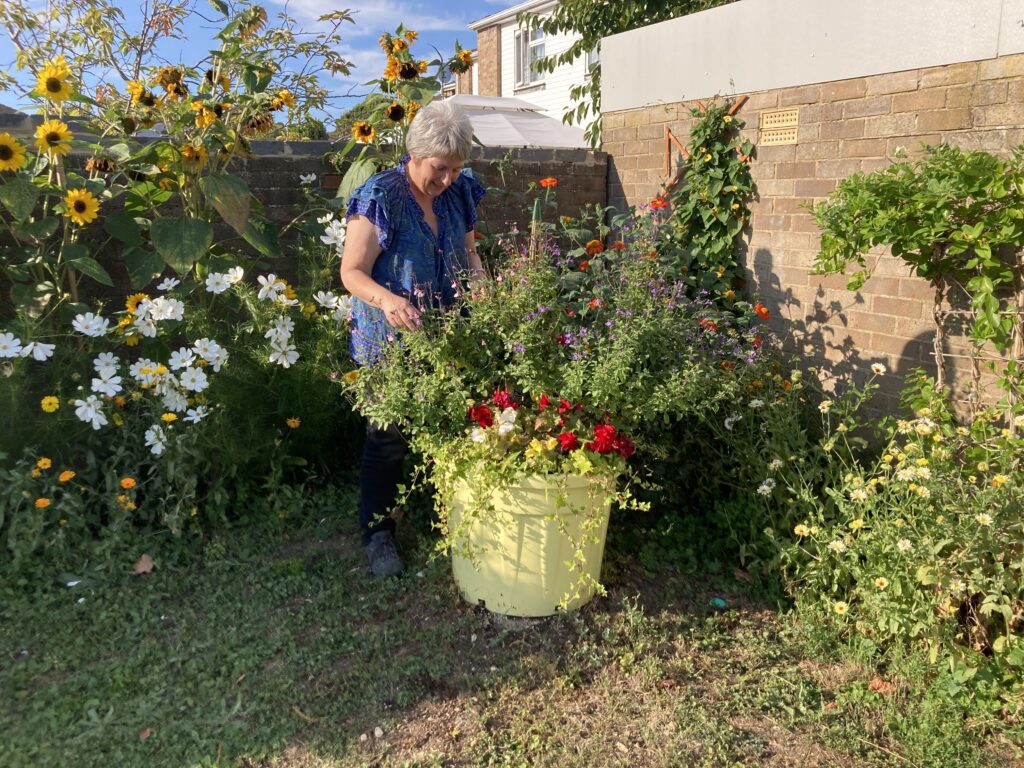
Dawn Weller, one of the ‘flower ladies’ tending to one of the areas she has helped to transform on the estate.
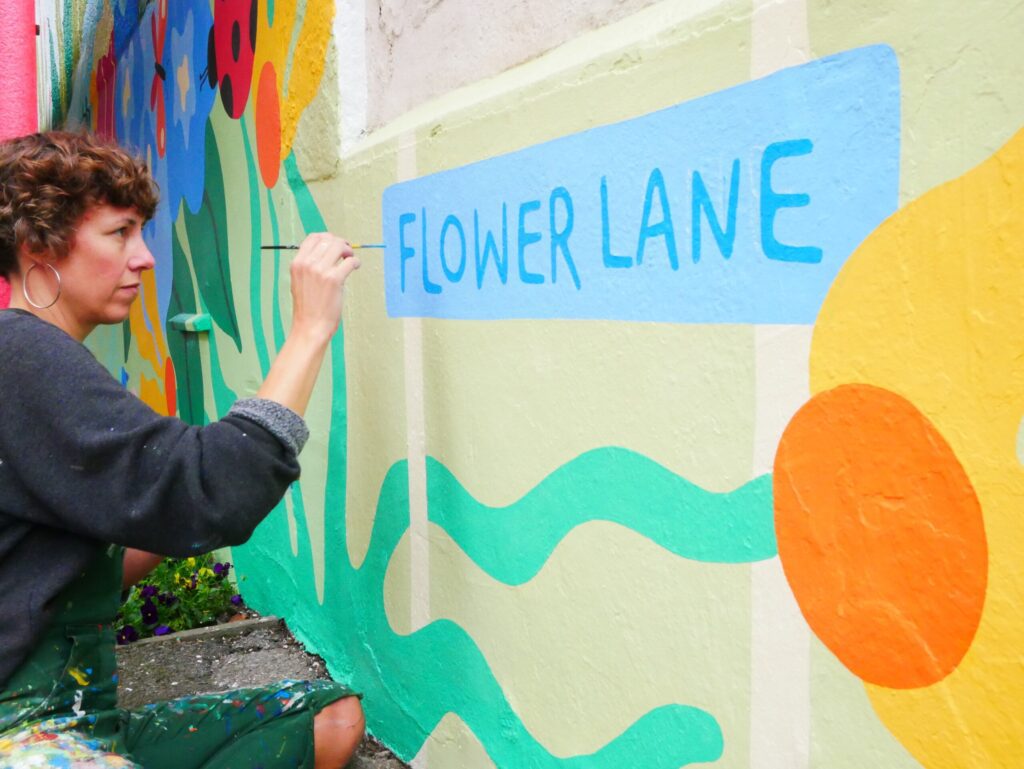
Local artist Lisa Curtis, puts the finishing touches to the mural. Flower Lane has now been registered as an official street name. You can even find it on Google Maps.
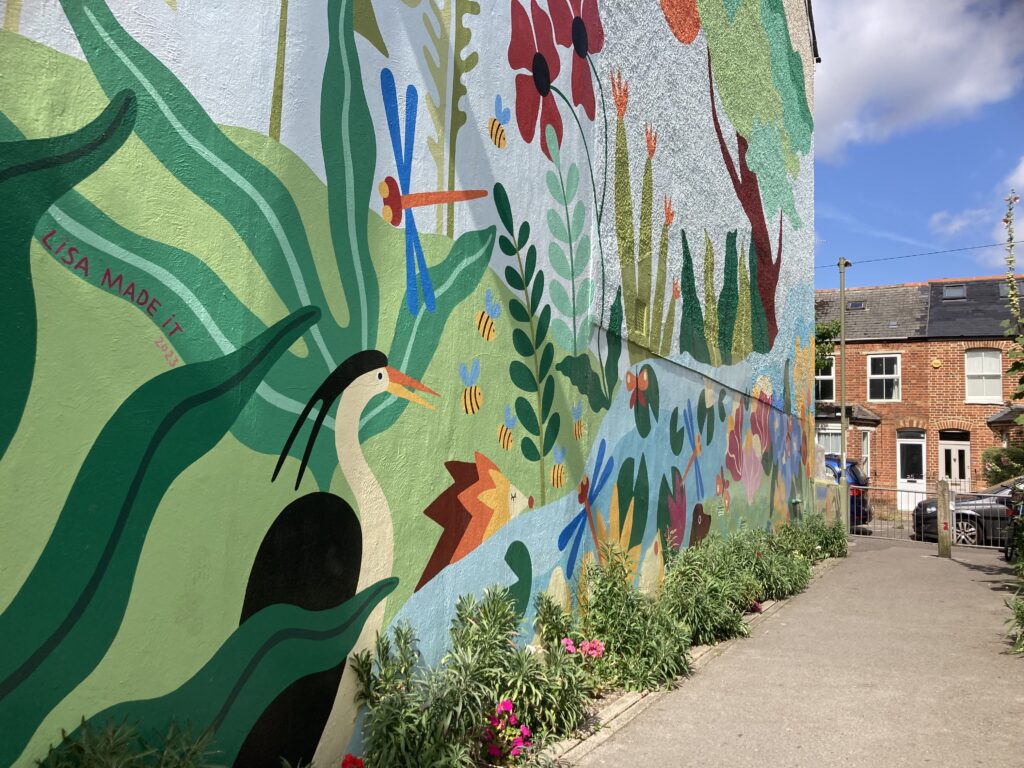
The ideas for what to put into the mural came from the local residents. They wanted the Boundary Brook in there as well as wildlife and flowers. “There was a craving for greenery,” says Dawn. “Something to make people feel happy.” Also included are fossilised oyster shells found in the area by a local resident and dated at 150 million years old.
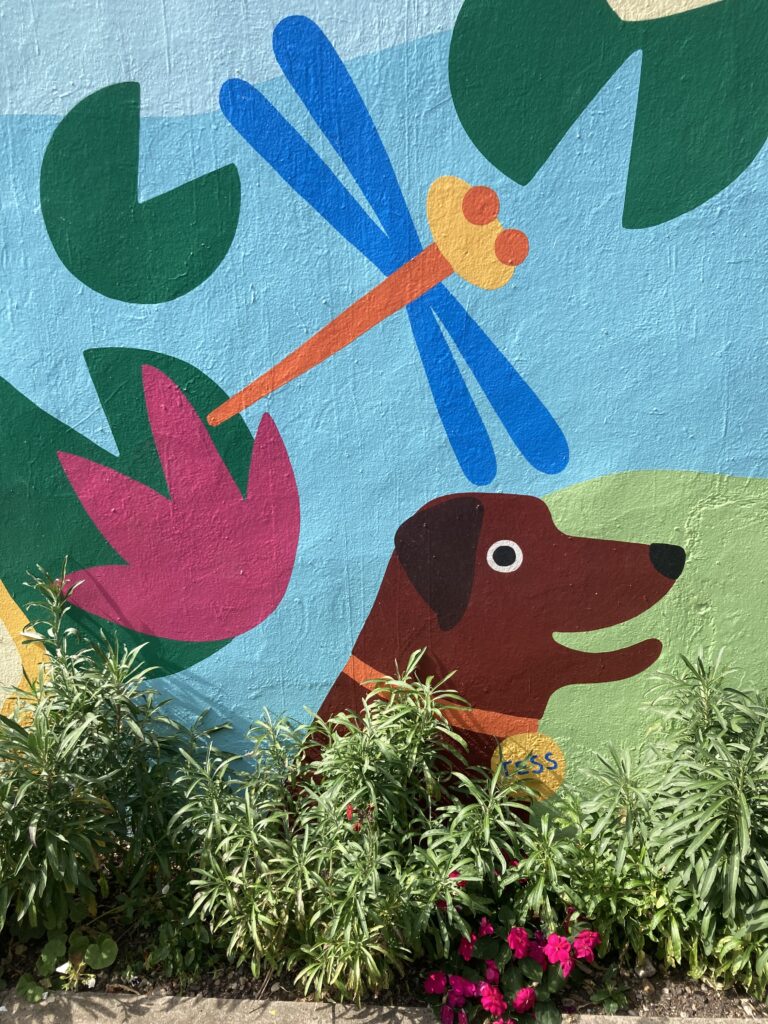
This is Tess, a brown labrador and local therapy dog belonging to the other ‘flower lady’ Lesley at the time the mural was painted.
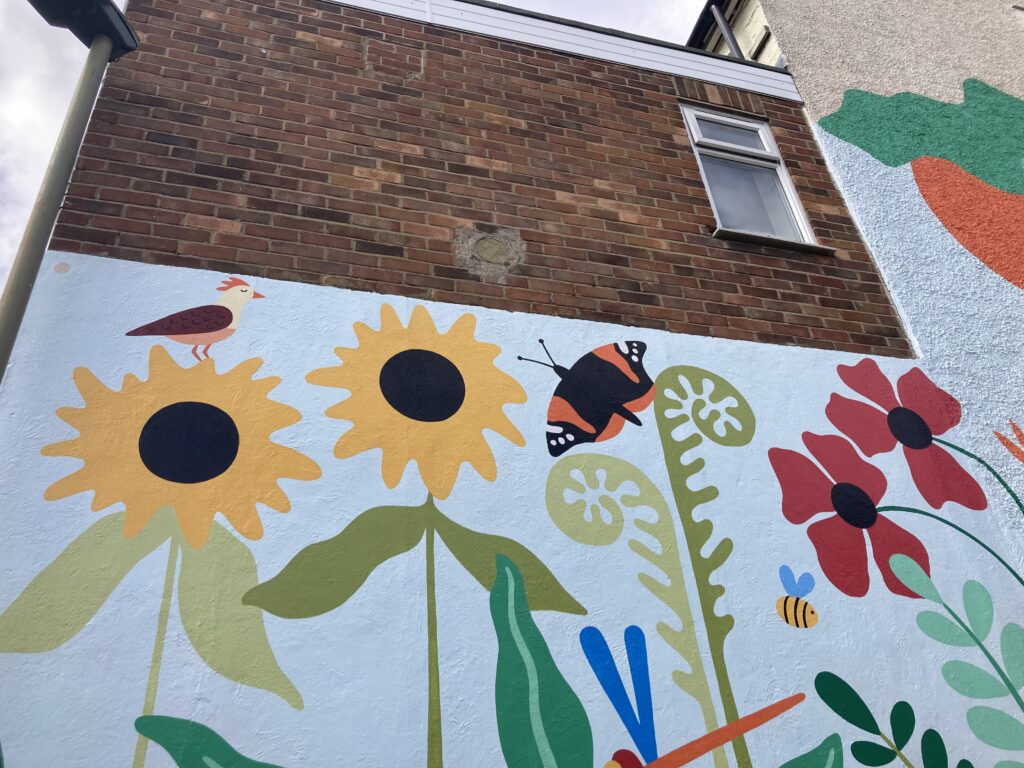
The lark from Larkrise is included. Also a Red Admiral butterfly and poppies are symbols of remembrance and hope in memory of two local young people who died suddenly.
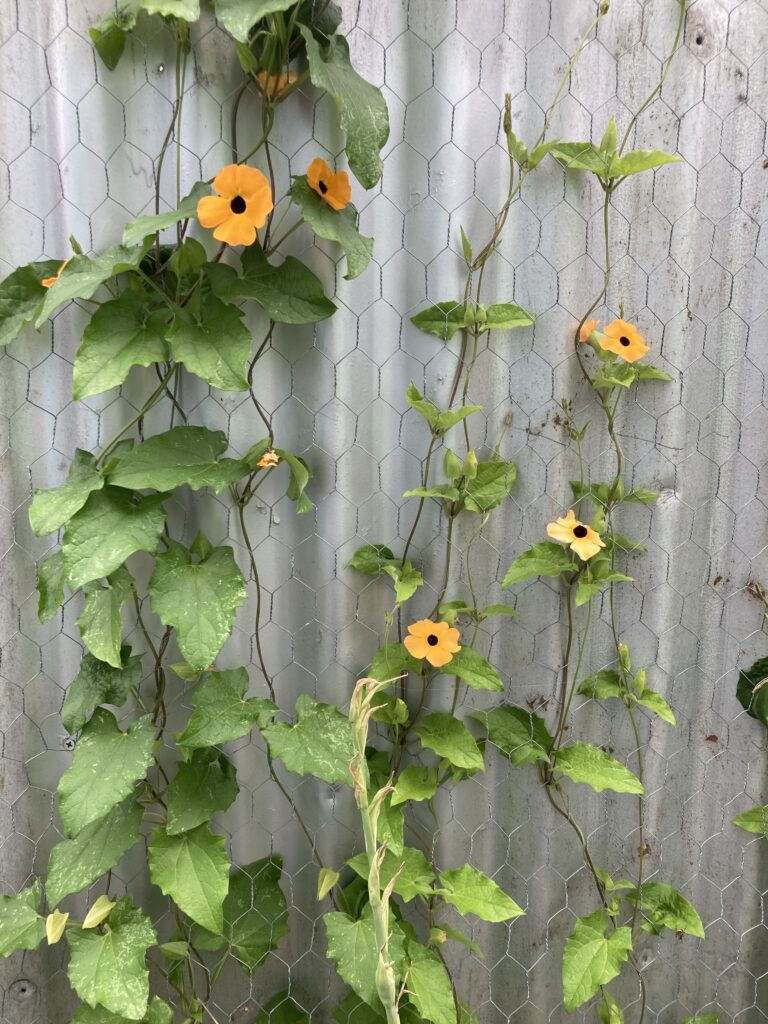
Black-eyed Susan.
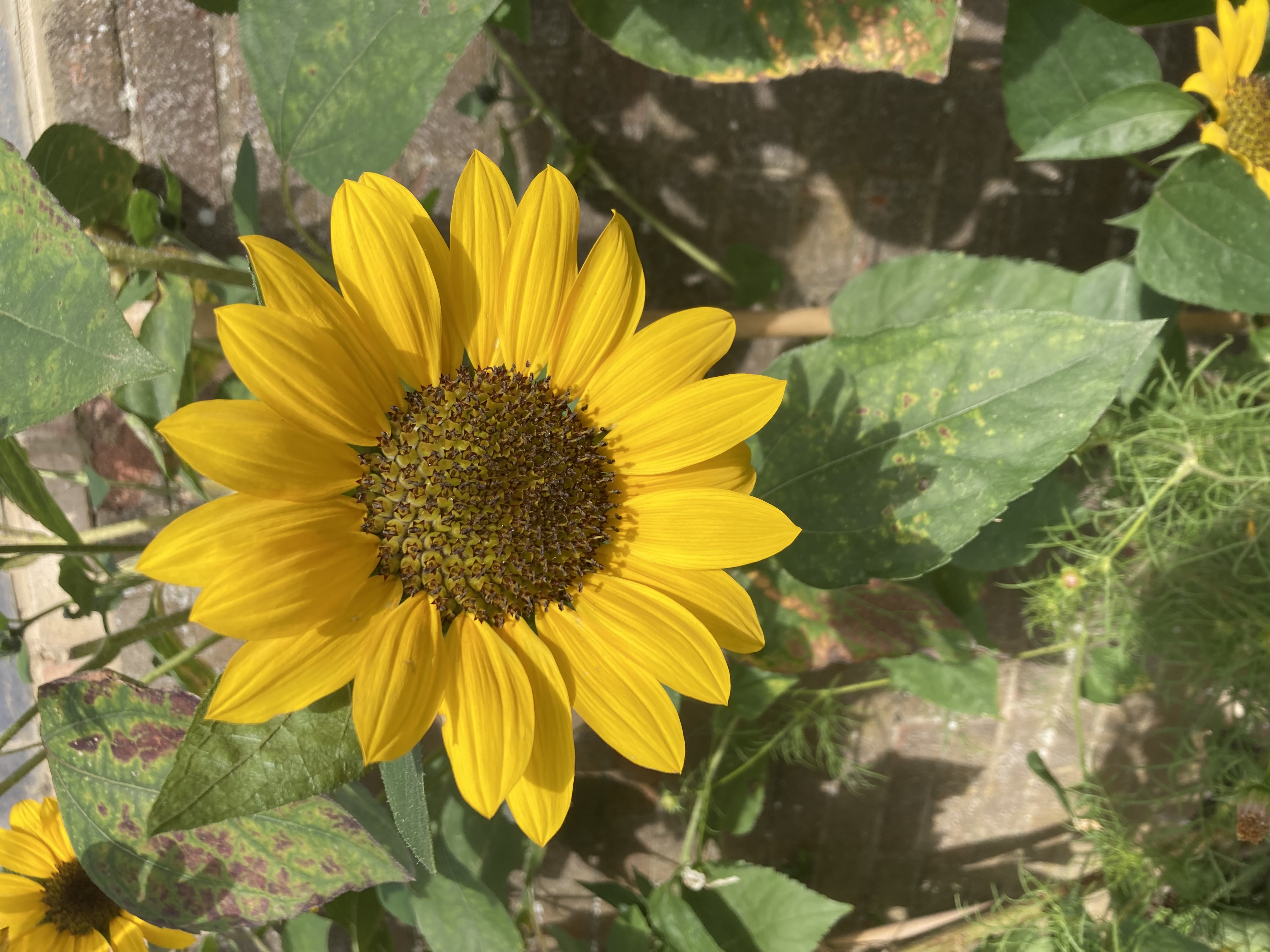
Sunflowers are everywhere. Fuschias and canna lilies are also favourites.

Boundary Brook Rd surrounds the estate. The brook itself now runs further south.
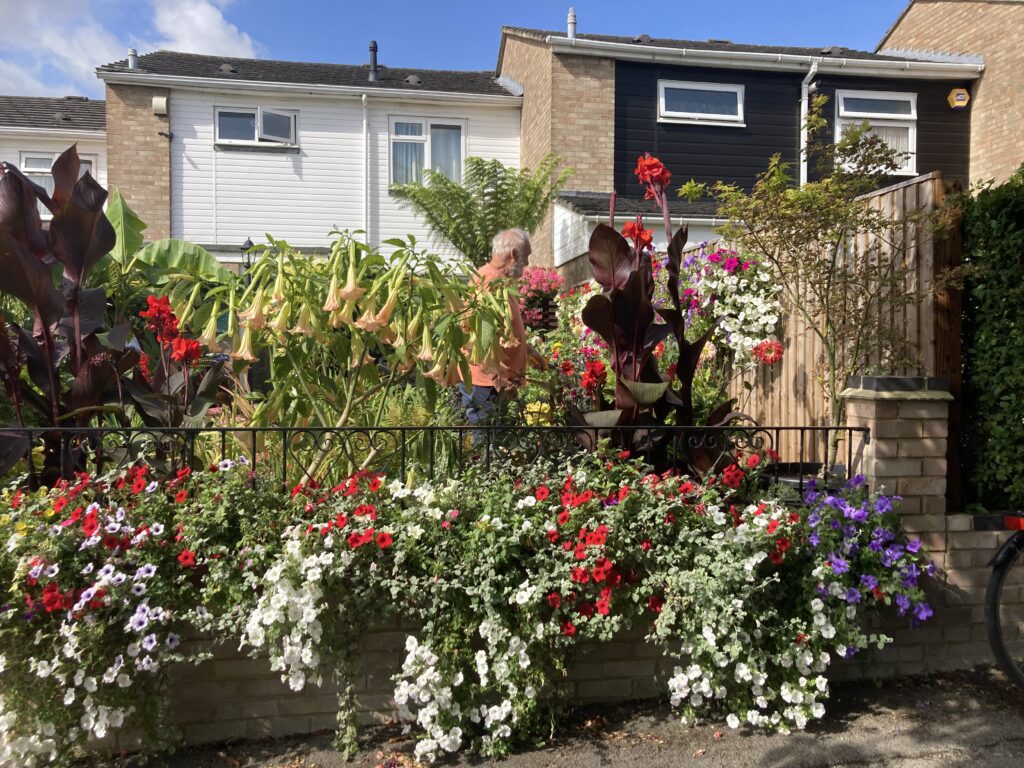
You can’t miss Dawn’s garden on the estate. She grows all her plants from seed, too many for her own use. They are given to neighbours or planted on Flower Lane. Her husband Brian was busy watering as I passed.
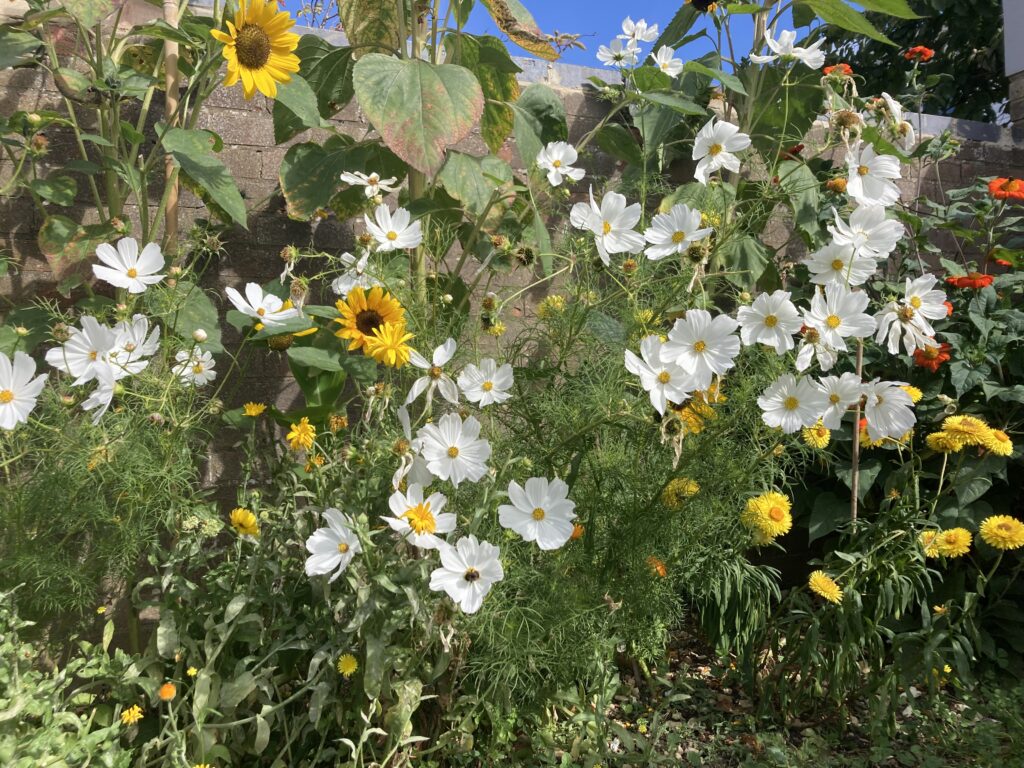
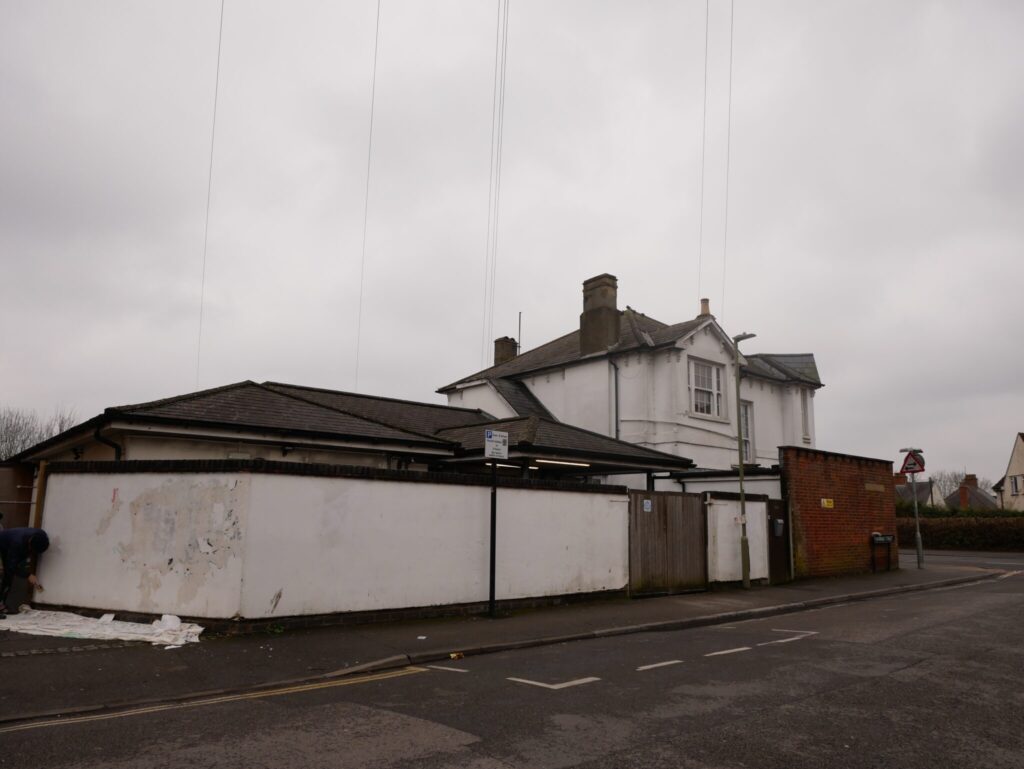
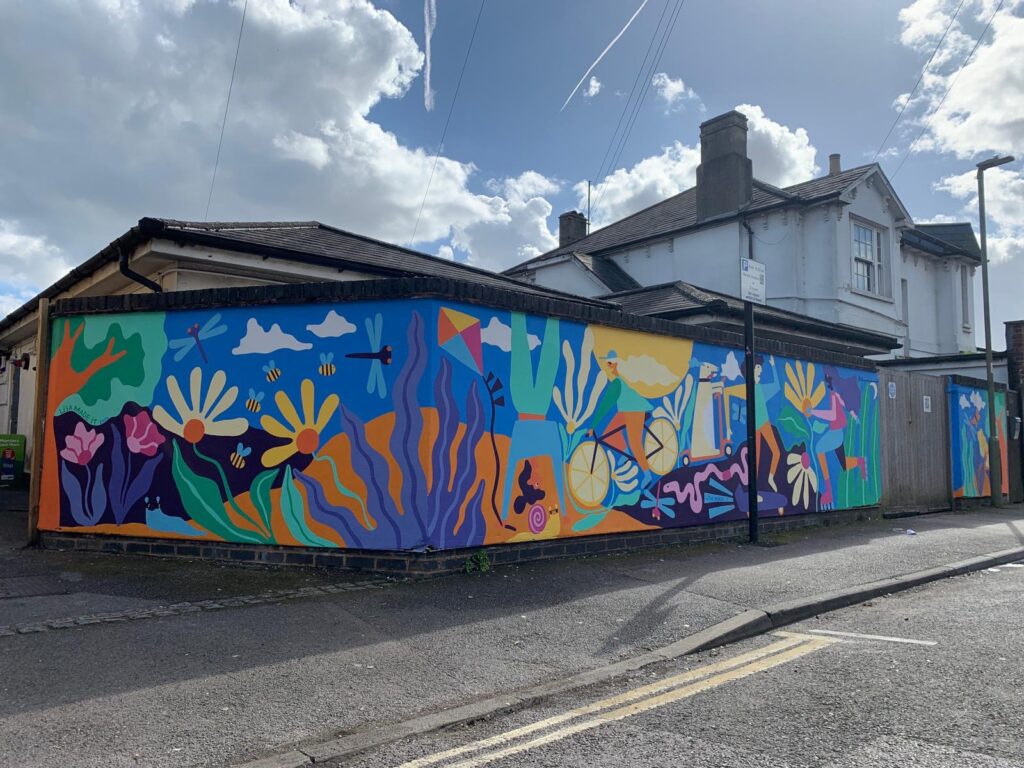
Before and after the wall of the Coop on Howard Street was tranformed.
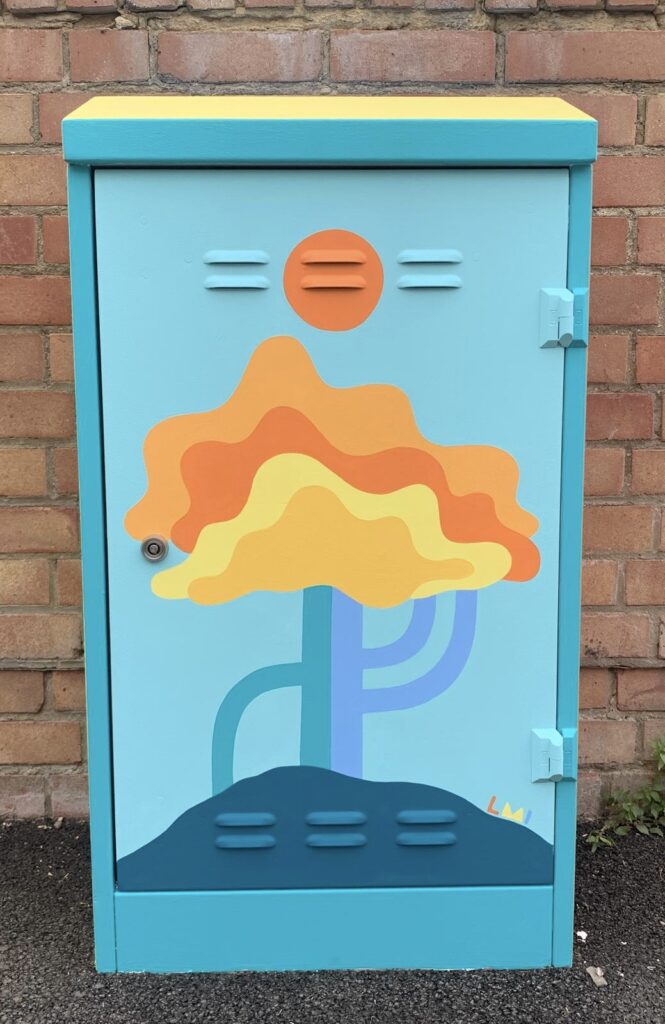
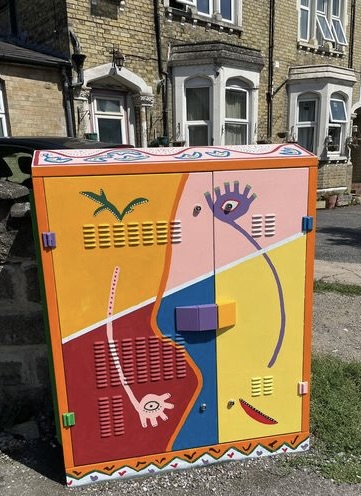
The first two in a series of OxBoxes being painted by local artists. On the corner of Percy Street by Lisa Made It (left). And on the junction of Cowley Road and Southfield Road by Aiden Canaday (right)
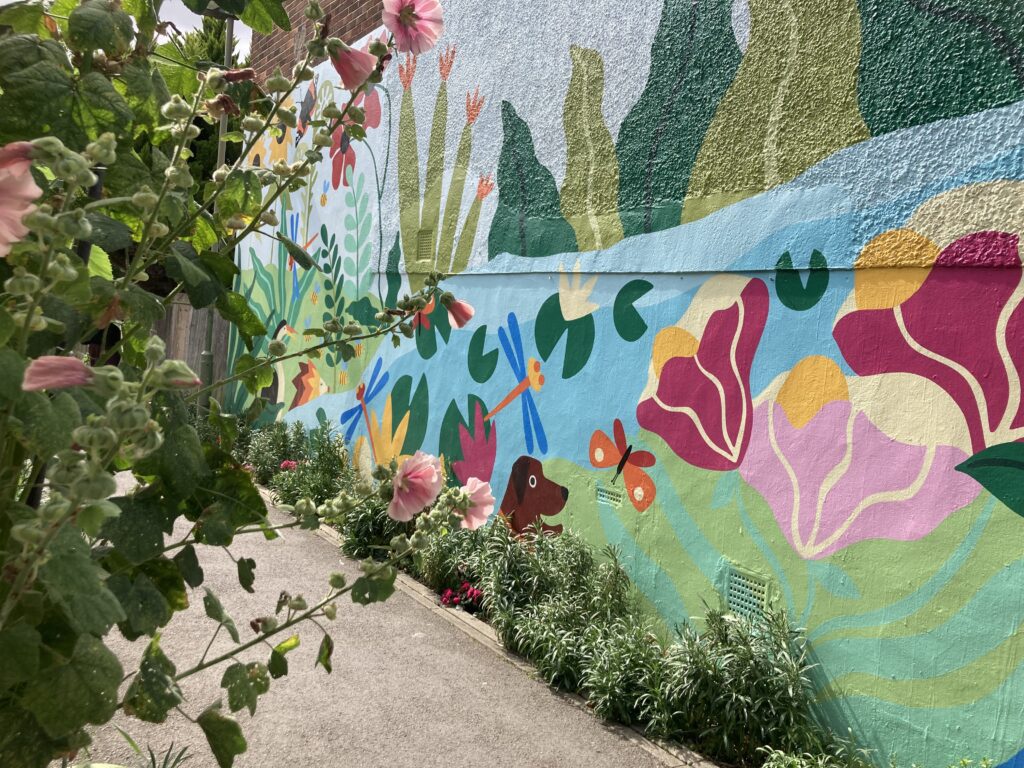
Flower Lane.
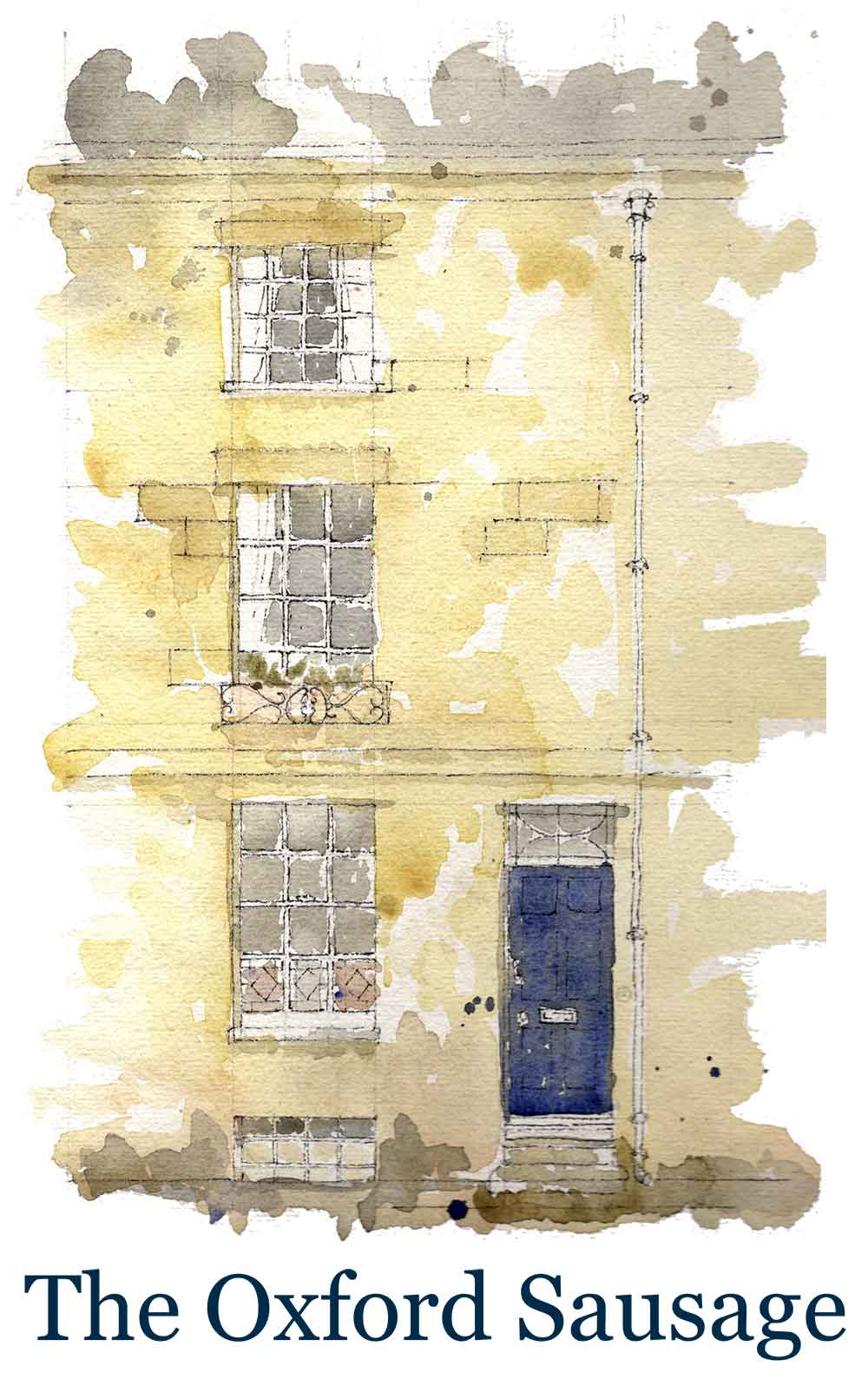
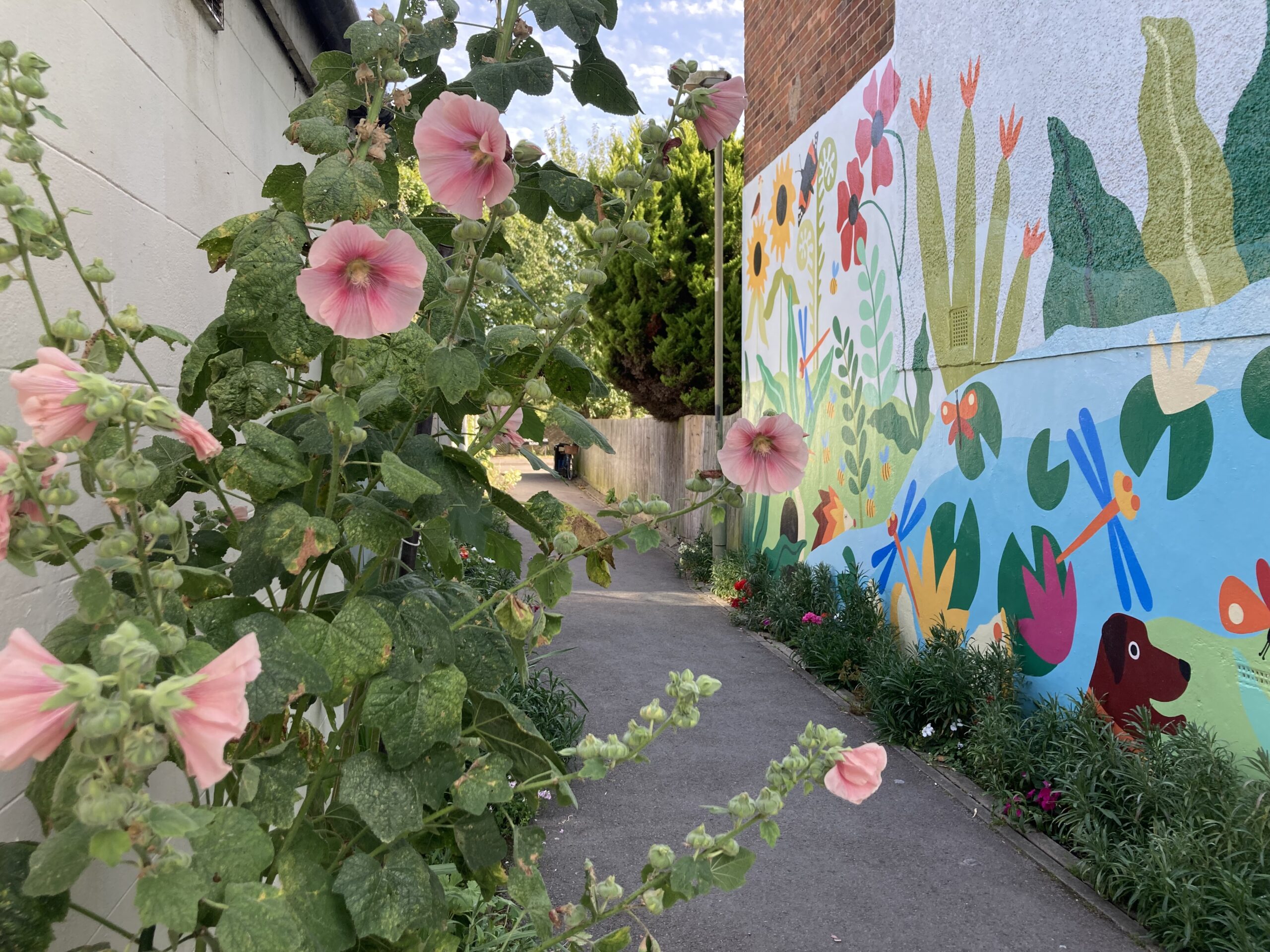
3 Comments
Join the discussion and tell us your opinion.
Another cracking read. Take a trip to Jericho Passage between Albert St and Hart St in Jericho.Similar. Inspiring.They had a party last week there. Read all about it here.
https://www.bbc.co.uk/news/articles/cn3delg915do
Such a beautiful transformation! I look forward to visiting.
It was a pleasure to meet you. I enjoyed our time sitting and chatting on the bench in Flower Lane. I hope to see you
again soon.